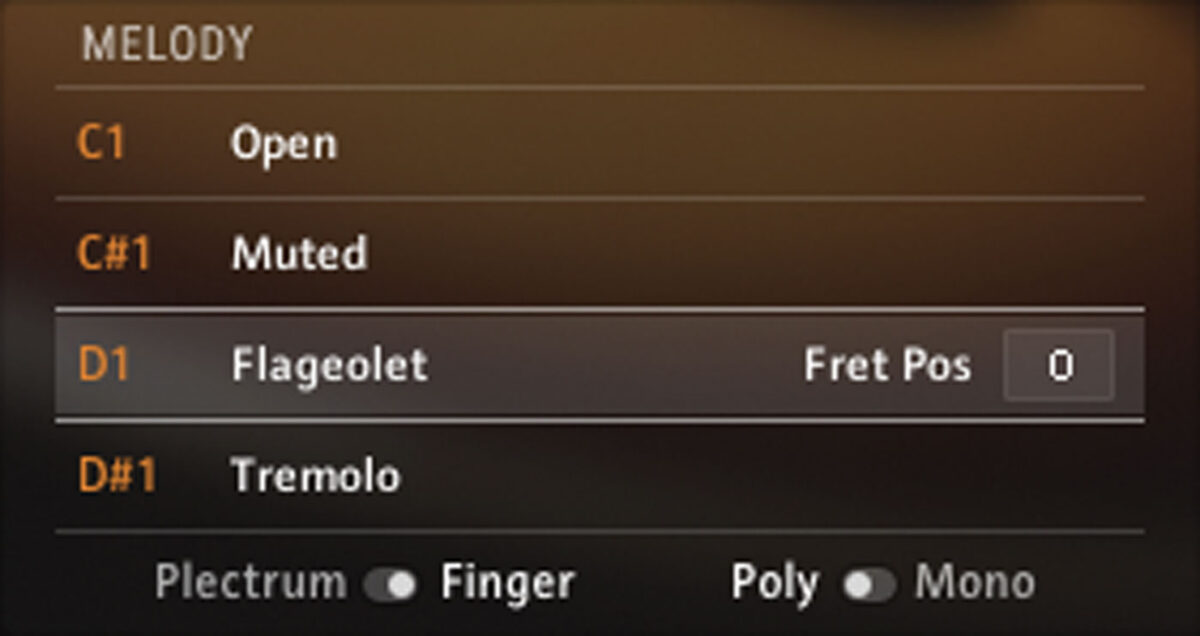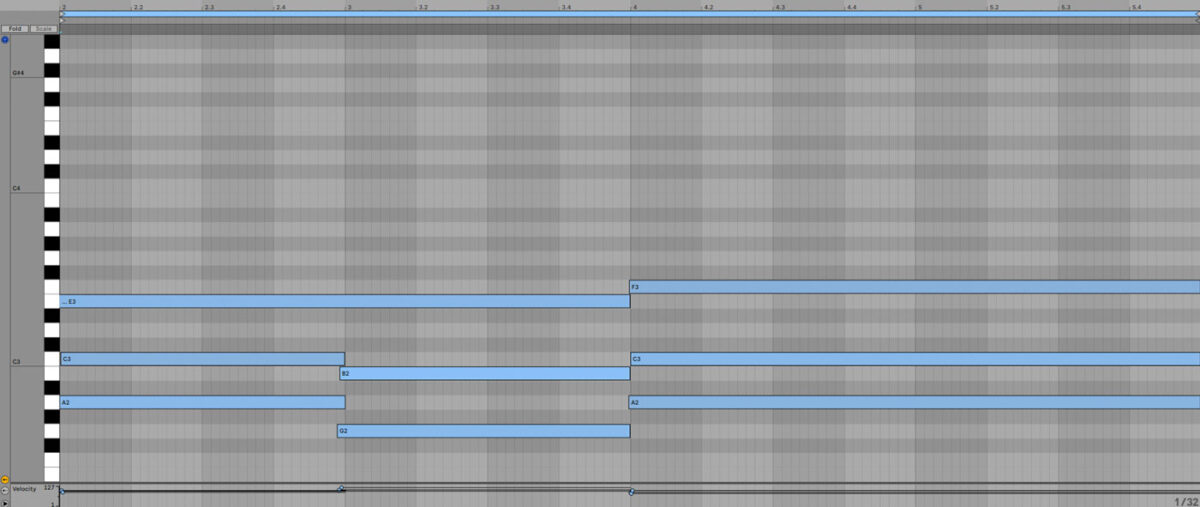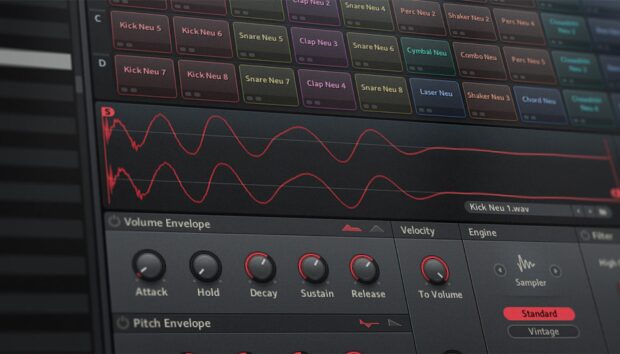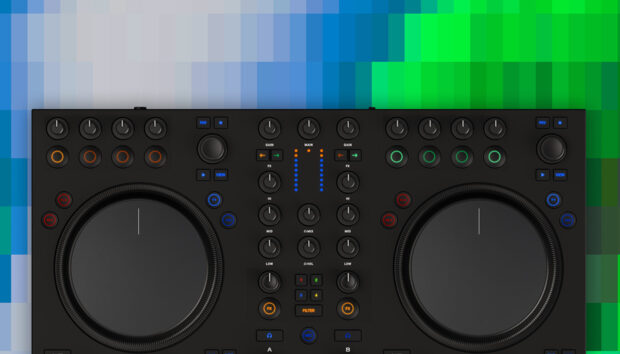
Eliciting an emotional response in a listener is one of the most important things one can do as a songwriter. But in digital music production, creating that lifelike resonance can be challenging, especially if you are using digital instruments and samples. Acoustic guitar is a popular and versatile choice of instrument, but getting a realistic sound out of a MIDI acoustic guitar isn’t always so easy.
In this article, we’ll go through some acoustic guitar production tips to make sure you’re getting the most out of your strummed VST – giving your music warmth and authenticity.
Jump to these sections:
Follow along with Session Guitarist – Acoustic Sunburst Deluxe, a new acoustic guitar VST that delivers rich and resonant tones of a premium jumbo model.
How can you use a strummed acoustic VST?
Beatmakers and producers will often primarily use electronic elements in their music. An acoustic guitar can add a layer of natural sound on top of those elements. By introducing an acoustic guitar’s strummed chords and intricate fingerpicking patterns, a producer can warm up their sound and add a truly authentic foundation to their music.
Whether it’s in the context of pop, like “Stardust” by ZAYN:
EDM like Avicii’s “Wake Me Up”:
Or classic hip hop like “Thugz Mansion” by 2Pac featuring Nas and J. Phoenix.
The acoustic guitar’s versatile sound allows producers, beatmakers, and songwriters to blend traditional sounds with modern production techniques and create a unique sound for their music.
But not everyone knows how to play guitar. It’s an instrument that can take years to master. On top of that, you need expensive equipment to record the guitar’s tone effectively.
That’s assuming you don’t have access to a good MIDI acoustic guitar. With an advanced strummed VST that can replicate the nuances of a real guitar, you can create complex guitar-driven tracks without the need for the instrument itself. This kind of technology is bridging the gap between traditional musicianship and modern production.
Guitar VSTs are virtual instruments that are designed to replicate the sound and playability of a real acoustic guitar. Session Guitarist – Acoustic Sunburst Deluxe, for instance, provides a range of features like hundreds of riffs, strumming and picking patterns, and sound presets, which make it easy to integrate hyper-realistic guitar sounds into your music.
By utilizing these VSTs, you can mimic the subtle distinctive sounds of a live guitar performance in each strum and pluck.
5 ways to use a MIDI acoustic guitar in your music
Understanding the VST you have chosen is important. If you want to create a convincing track, you need to know your tools inside and out. So let’s look into some ways that we can use Session Guitarist – Acoustic Sunburst Deluxe to create expressive guitar tracks that sound like they’ve been played by a session player.
1. Build a solid foundation with acoustic guitar chords
Acoustic guitars provide the harmonic foundation that supports a song’s melody and rhythm. By using the parameters in a MIDI acoustic guitar, you can program chord progressions that are both complex and natural sounding.
Let’s use the simple chord progression VI – iv – i – VII (in E minor that will be C major – A minor – E minor – D major) and run it through Session Guitarist – Acoustic Sunburst. We’ll use the “On The Go” preset for a bouncy rhythm to liven up our progression.

By selecting Voicing 1 from the voicing dropdown menu, we can add tensions to each chord, specifically making each one an Add4. This added tension provides a touch that reflects a guitarist’s understanding of the instrument. It adds a genuine acoustic “guitarism” into our chord progression and makes the track feel as if it were played by a real guitarist.

2. Add delicate textures with fingerpicking
One of the signature sounds of an acoustic guitar is fingerpicking. This technique adds a certain intimacy to the sound of a track. Experimenting with textures like this can bring exciting stylistic idiosyncrasies to your songs.
If you’re not sure what fingerpicking is, listen to the guitar part of the folk classic “Don’t Think Twice, It’s All Right” by Bob Dylan:
By tweaking a preset in Session Guitarist – Acoustic Sunburst Deluxe, we can create a similar sound to Bob Dylan’s folky playing.
Let’s start with the preset “Head In The Clouds.”

Next, we’ll change the voicing to “as played” so that we’re fully in control of our chord’s tensions.

Finally, let’s utilize the controls in the playback menu to adjust the timing and tone of each note and mimic the imperfections of a recorded performance.

Altogether this is what it sounds like. It’s pretty close to the guitar in “Don’t Think Twice, It’s All Right.”
3. Let your acoustic guitar take the lead with melodies and solos
Acoustic guitars don’t always have to be accompanying instruments. They can also shine in the spotlight.
When programming MIDI for lead parts, consider elements like dynamics and articulation. If you incorporate these parts artfully into your song, you can evoke powerful emotions in the listener.
Let’s use the “Melody” mode of Session Guitarist – Acoustic Sunburst to create a delicate melody over chords.
On the melody panel, we’ve chosen the “flageolet” setting played with fingers as our articulation. This allows us to use airy flageolet harmonics as our melodic element of this riff.

Our melody sounds like a real guitarist has played it, and it creates an emotional centerpiece on top of the chords.
4. Add effects to bring an atmospheric quality to your music
Effects like reverb and delay can transform a simple MIDI acoustic guitar line into an atmospheric soundscape. Reverb will add depth and space, while delay creates rhythmic echoes that will texture your track.
Let’s listen to the before and after of the “Melancholia” preset.
Here is what the preset sounds like when it is dry.
It doesn’t sound bad at all. But if you want to add subtle shine to the strummed VST, you’ll want to enable some effects:
These effects add depth to the sound, and make them feel like they are in a space, rather than a vacuum. Apart from pure aesthetics, effects help your guitar sit more comfortably in a mix.
All of these effects are onboard in the “Amps & FX” menu of the plugin. Of course, you don’t have to be limited to that. Any outboard effects you can think of will shape the sound of the guitar in various ways.

5. Layer your guitars for a full-bodied sound
If a guitar is a focal point of your song, you should consider layering multiple instances of MIDI guitar to create a rich and full sound. Programming the same strumming patterns with slightly different notation can help make your arrangement feel fully fleshed out and well-arranged.
Here is an instance of Session Guitarist – Acoustic Sunburst playing a chord progression. We’ve narrowed the stereo image so this sound is mono.
There’s nothing wrong with this sound. But if we take another instance of the VST and pan each instance left and right, we can create something far more compelling. To avoid these instances sounding too similar, we’re also changing the inversion of the chords in one voice.
Here is the MIDI information we’re using for layer one.

And here is the MIDI for the second layer. Notice that we’ve made an inversion by changing the positions of the E and F notes in the chords.

That ends up sounding like this:
You can hear that layering has made a massive difference to the stereo image of the guitar sound we’re using.
For those of you who are already using Native Instruments’ Session series, you can also layer your guitar with another Kontakt instrument like Session Ukulele, as these two VSTs share consistent MIDI drag-and-drop functionality.
Bring organic warmth to your music
Even though it is a virtual instrument, a VST like Session Guitarist – Acoustic Sunburst Deluxe can add a deep level of organic warmth to your music. Virtual instruments that are sampled intricately can bring texture and expression to any of your compositions regardless of your preferred genre. Use the acoustic guitar production tips you learned today and warm up your tracks.















